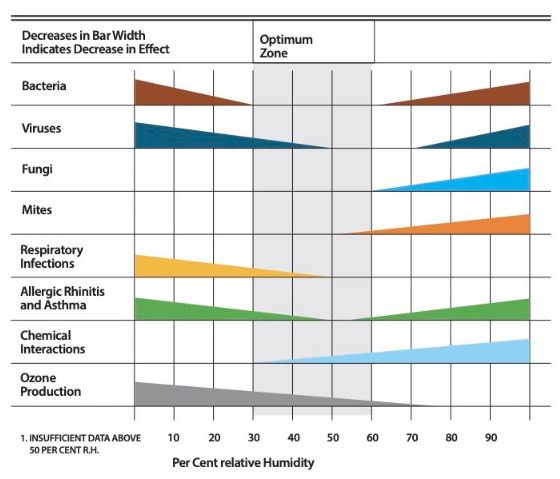How to reduce annoying Static Electricity (and distinguish it from real electricity)
How to reduce annoying Static Electricity (and distinguish it from real electricity)
Static electricity is just plain rude! Although it can seem like someone has electrified your doorknob to play a trick on you, most likely your own body is just ridding itself of built-up static electricity.
Why and how does one accumulate that much electricity, anyway?
This topic warrants a small science lesson, so bear with us! As you walk around your house, friction will cause electrons to transfer between surfaces. Friction on floors (especially carpet), friction between your clothing, and friction between your clothing and body will all cause transfer of electrons, usually resulting in you becoming positively charged (we tend to lose electrons). Any kind of imbalance in electrons between two objects is basically voltage potential, so the potential continues to build until you touch something that is grounded (a metal appliance, doorknob, or another person) and BAM! The potential dissipates immediately in the form of a spark or shock. This means that the missing electrons are suddenly transferred back to you in a moment’s time. Static electricity shocks are on the average 3000 volts–but very little “amps”, so although they don’t feel good, they usually do not harm you.
You may notice that static shocks in the wintertime occur more frequently or with more power. What’s up with that? It’s due to dry winter air. Warmer air has more capacity to hold water vapor, which when it touches our skin can transfer electrons painlessly so voltage potential never builds up. However, cold air has less capacity to hold water vapor, so it tends to be dry and more insulating. That is not good for our sinuses and skin, as well as the nasty static shocks.
If you’re concerned that it’s not actually static that is causing the shock, there are ways to tell the difference between static and real electricity. First of all, does the object that shocked you do so every time you touch it? Static is not constant, meaning that once the shock occurs, it takes some friction to build up the voltage potential again. Touching the same doorknob a few seconds after a shock usually does not elicit another shock, indicating that it’s static. Electricity, on the other hand, will cause your hand to “tingle” again every time you touch it (so don’t do this repeatedly until you can find the power source and shut it off!) The “tingle” is actually the alternating current that powers all the appliances in the house, and it feels different from static. You can also use a voltmeter to measure the potential between the "ground" of an electrical socket (the little round hole at the bottom of each outlet) and the doorknob. If it's real electricity, you should see about 120 volts (using the 200VAC setting) constantly (although an intermittent ground may flicker up and down). It’s not possible to measure static electricity using an ordinary voltmeter.Here are some weird and dangerous ways that real electricity can make its way to your doorknob or other metal:
- One person found that the extension cord running under his door (which is a no-no anyway) had gotten a nick in the insulation from the door rubbing on it. He unplugged it and there were no further shocks.
- When doors are installed, normally there's at least one longer screw in each hinge in order to get more holding power into the door frame. There's a chance the screw could have run into a wire, either behind the trim or in the wall (sometimes people hide wires behind trim instead of properly routing them inside the wall)
- If there's a moisture problem in the wall, any fault in the wiring can be transmitted a longer distance to the doorknob.
Faulty wiring in the wall of a house is a serious safety issue, and even more so faulty wiring or ground problems in an RV or travel trailer. Because these homes on wheels are insulated by rubber tires, the major way of grounding them is through the ground prong of the electrical cable. If there is a break in the ground system and hot wires touch the frame, the potential of electrocution is very real. In a word, if you suspect your RV has faulty wiring or ground problems, disconnect it from power and ask a knowledgeable person or electrician to examine it as soon as possible!
So, getting back to our static problem, how can you reduce the frequency and severity of these shocks? Here are the easiest ways:
- Check the humidity in your home and if it’s less than 50%, try adding a humidifier. Even a kettle of water on an electric hotplate set on low (make sure to check frequently that it has plenty of water and turn it off when you leave the room) can help to alleviate static, as well as sooth your respiratory system and skin. Adding a cinnamon stick or a few fresh herbs can add a light, pleasant scent, too!
- Using bipolar ionizers like the Germ Defender, Upgraded Air Angel Mobile or Whole Home Polar Ionizer in your home eliminates static buildup. Did you know that these use the same type of technology used in electronics cleanrooms to eliminate static charge? The ions float throughout rooms in your home and help to equalize the charge wherever they touch a solid surface.
- Wear more natural fibers (but not silk or wool), as fibers like cotton and linen tend to build up less static charge than synthetic fibers like nylon or polyester. Silk and wool, while they are natural, do build up static charge because they tend to insulate better than they conduct electricity.
- Go barefoot when you can. The practice of grounding or earthing not only avoids static shocks but also provides evidence of other health benefits.
- Synthetic hairbrush bristles may generate more friction and static than natural bristles such as boar’s bristles, so you may opt to change your brush.
- Moisturize your skin and hair with lotions or conditioners to help “conduct” charges into the air.
- Touch metal surfaces such as doorknobs with another metal first, like a key, so that the charge is not sent directly into your fingers.
Winter doesn’t have to be so SHOCKING…now that you know where all this extra energy comes from!
Photo by Ilona Panych on Unsplash





